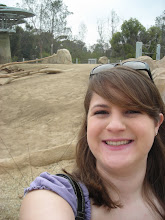Every August teachers from around the state of Arizona participate in a K-12 Center Tech Camp. This is a weeklong camp that teaches teachers about using technology in their classrooms. The mission of this camp is to improve the teaching and learning in Arizona's schools through higher quality development and teacher leadership. Each year the camp comes up with three different topics that will be focused on during the week at camp. In 2007 the three topics were: multimedia, podcasting and Web site development. In the multimedia focus group, teachers learned about iMovie- an application on MACs to produce movies. Students would be given free expression about their movie, while the teacher watched the content that each student was producing. A first grade teacher made a movie with her students about fire safety, and thought it worked great. All of the students wanted to be part of the movie making process. In the podcasting focus group, teachers learned that new technology like podcasting can be fun and exciting for both them and their students. At Tech Camp teachers learned to write, read and produce their own podcasts. This would be an effective tool to use for English Language Learners (ELL) in teaching them to slow down and enunciate every word that they read. Students can record their voices and play it back so that they can listen to themselves speak. In the Web site development focus group, teachers learned how to make a basic Web site. As Kathryn Scott stated, "The classroom needs to catch up with [the students'] daily lives, where technology is already in action." Too many schools around the country and disassociated with their students in today's schools. With technology, schools can gain back their role as teaching students new and exciting things once again. With the Web site skills and all the other skills that Arizona teachers are learning from the Tech Camp, their students will be by far the most prepared for their future than any other state. Everyone else needs to jump on board and join Arizona in making our schools technology based for every student.
I think that this Tech Camp is a great idea! I could learn so many new lesson plans just from spending a week at this camp. With its hands on activities and exercises every teacher should be able to learn these technologies. Arizona has the right motivation behind this camp, in that they are making the students the number one priority again. I think that every state in the U.S. should have a program like Tech Camp in Arizona. I will be definitely going on the website for this camp so that I can learn the new technology that these Arizona teachers are learning as well. The website is http://www.azk12.org.
It's not coolness factor that counts, by Don Hall
-
In this article, Don Hall talks about the emphasis on what is "cool," in
particular with technology. He says that there is too much focus on what's
cool, w...
16 years ago
